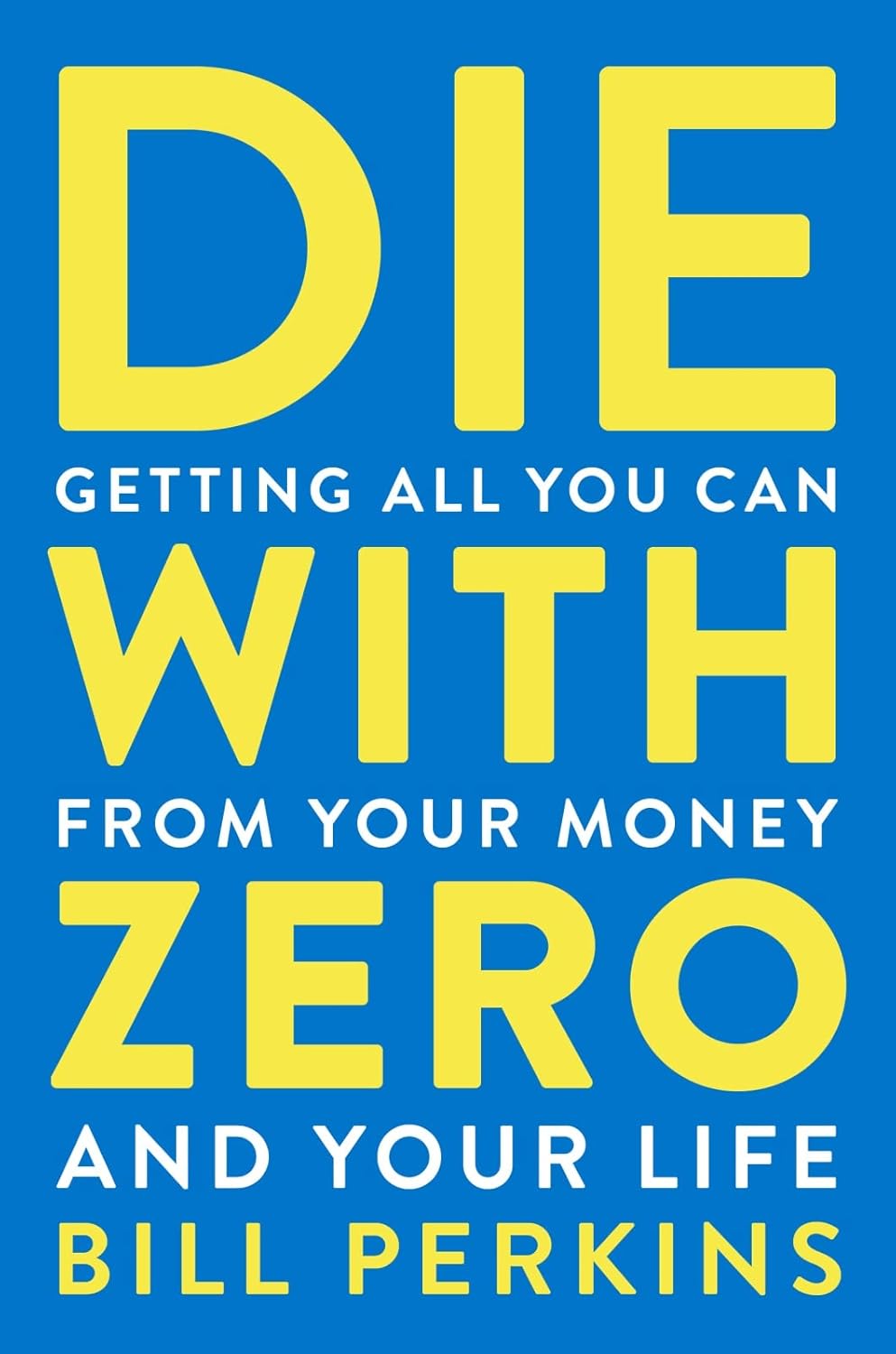Introduction
Bill Perkins’ Die With Zero is a bold and unconventional take on personal finance, challenging the traditional mindset of saving for retirement at the expense of living a fulfilling life. This book has sparked intense debates in the financial independence community, urging readers to rethink how they balance saving, spending, and creating meaningful experiences. In this review, we’ll dive into the key ideas, strengths, and weaknesses of Die With Zero, and explore why it’s a must-read for anyone questioning the “save more, spend less” mantra.
What Is Die With Zero About?
The core premise of Die With Zero is simple yet radical: instead of hoarding wealth for a distant future, you should aim to spend your money in a way that maximizes life experiences and happiness, ideally leaving little to no money behind when you die. Perkins argues that dying with zero is the ultimate goal because it means you’ve fully utilized your resources to live your best life. He acknowledges that achieving exactly zero is nearly impossible, but the idea is to get as close as possible by prioritizing experiences, giving to loved ones, and donating to causes you care about—while you’re still alive.
Key Themes and Ideas
1. Prioritizing Experiences Over Savings
Perkins emphasizes the importance of creating “memory dividends”—memorable experiences that bring joy and fulfillment throughout your life. He argues that these experiences are more valuable than money left unspent, especially since you can’t take wealth with you after death. However, this idea is most relevant for those who are already financially secure, as it assumes you have enough saved to comfortably retire.
2. The Danger of Over-Saving
The book critiques the extreme saving habits often promoted in the FIRE (Financial Independence, Retire Early) community. Perkins warns against sacrificing your present happiness for a future that isn’t guaranteed. He encourages readers to find a balance between saving for retirement and enjoying life now.
3. Giving While Living
One of the most compelling arguments in Die With Zero is the idea of giving money to loved ones and charities while you’re still alive. Perkins believes that generosity has a greater impact when it’s done in real-time, rather than leaving an inheritance after death. This approach allows you to see the positive effects of your contributions and strengthens relationships.
4. Calculating Life Expectancy
Perkins suggests using life expectancy calculators to estimate how long you’ll live and plan your spending accordingly. While this can be a useful tool, it’s not foolproof, as life is unpredictable. This section of the book has been met with skepticism, as it assumes a level of certainty that simply doesn’t exist.
Strengths of the Book
1. Challenging Conventional Wisdom
Die With Zero forces readers to question the traditional financial advice of saving as much as possible. It’s a refreshing perspective that encourages people to live more intentionally and prioritize what truly matters.
2. Focus on Life Experiences
The concept of “memory dividends” is a powerful reminder to invest in experiences that bring joy and fulfillment. Perkins’ emphasis on creating meaningful memories resonates deeply, especially in a world often dominated by material wealth.
3. Generosity and Giving
The idea of giving while living is both practical and heartwarming. It shifts the focus from accumulating wealth to using it to make a positive impact on others’ lives.
Weaknesses of the Book
1. Limited Relevance for Most People
The book primarily targets those who are already financially secure, making it less relevant for individuals struggling to save for retirement. Perkins’ advice to spend more and save less could be dangerous for those without a solid financial foundation.
2. Risky Recommendations
Suggesting that people take on debt in their 20s and 30s to fund experiences is a controversial and potentially harmful idea. Life is unpredictable, and not everyone will have the high-earning years Perkins assumes.
3. Overemphasis on Spending
While the book encourages a balanced approach, it sometimes leans too heavily on spending, potentially downplaying the importance of saving for emergencies and unexpected life events.
Who Should Read This Book?
Die With Zero is ideal for individuals who are already on track with their retirement savings and are looking for ways to optimize their spending and life experiences. It’s also a great read for those in the FIRE community who want to challenge their extreme saving habits. However, it may not be suitable for those who are still building their financial foundation or are risk-averse.
Final Thoughts
Bill Perkins’ Die With Zero is a thought-provoking and controversial take on personal finance. While it challenges conventional wisdom and offers valuable insights into living a more fulfilling life, some of its recommendations may not be practical or safe for everyone. Ultimately, the book serves as a reminder to strike a balance between saving for the future and enjoying the present. If you’re ready to rethink your financial priorities, Die With Zero is a worthwhile read—but approach it with a critical mind
